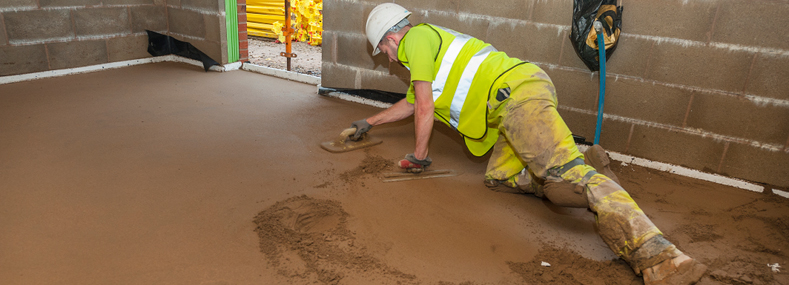29
Feb 2024
What Are The Benefits Of Reinforced Screed?
Screed is an important element within construction because it ensures a flat and smooth surface for different types of flooring materials.
Traditional screeds are effective, but the evolution of construction materials has led to the development of reinforced screeds.
Reinforced screed incorporates fibres or mesh and brings a whole host of benefits to construction projects. Keep reading to find out what they are…
1. Strength and durability
Reinforced screed is stronger and more durable than traditional screeds. Adding fibres or mesh reinforces the concrete, making it less likely to develop cracks or fractures.
This increased strength means the flooring lasts longer, lowering maintenance costs and providing a sturdier foundation.
2. Crack resistance
In construction, cracks in the flooring are a big concern as they can weaken the structure. Reinforced screed helps prevent cracks by evenly spreading strengthening materials in the mixture.
Crack resistance is crucial in busy areas where the flooring faces a lot of stress and heavy loads.
3. Improved load-bearing capacity
Reinforced screeds can handle more weight compared to traditional ones. The extra reinforcement, like fibres or mesh, helps spread the weight evenly across the surface.
This makes reinforced screed an ideal choice for areas with heavy machinery, equipment, or constant foot traffic, ensuring that the flooring can withstand the imposed loads without compromising stability.
4. Flexibility and thermal stability
Reinforced screeds demonstrate a higher degree of flexibility, allowing them to accommodate slight movements in the underlying structure without causing damage.
This flexibility is especially beneficial in areas with earthquakes or ground-settling concerns. They also have better temperature stability, lowering the chances of cracks due to temperature changes and offering a tougher flooring solution.
5. Time and cost efficiency
Even though using reinforcing materials at the beginning may seem costly, reinforced screeds can save money in the long run.
With fewer repairs and maintenance, as well as a longer-lasting flooring system, it adds up to overall cost efficiency. Plus, better performance might mean using thinner screed layers, saving on materials and speeding up construction.
6. Consistent quality
Reinforced screeds provide a more consistent and evenly finished product. By using reinforcing materials, the mixture becomes more uniform, reducing the chances of weak spots or uneven surfaces. This consistency results in a smoother and more visually appealing flooring finish.
Looking to invest in reinforced screed?
In the constantly changing world of construction materials, reinforced screed is a strong and dependable option for achieving top-quality flooring performance.
As technology and materials continue to advance, the role of reinforced screed is likely to become even more pivotal in ensuring the longevity and durability of modern flooring systems.
If you have your room measurements to hand and know exactly which type of screed you need, be sure to get in touch with us at JCW and we’ll provide a quote for our floor screeding services.
However, if you want a more accurate quote for your project, we can arrange a site survey – sending one of our screeding experts to visit your property and measure up and assess the job.
To arrange this, give us a call on 01204 387 029 or email your queries to estimating@jcwgroup.co.uk, and we’ll get back to you as soon as possible.


